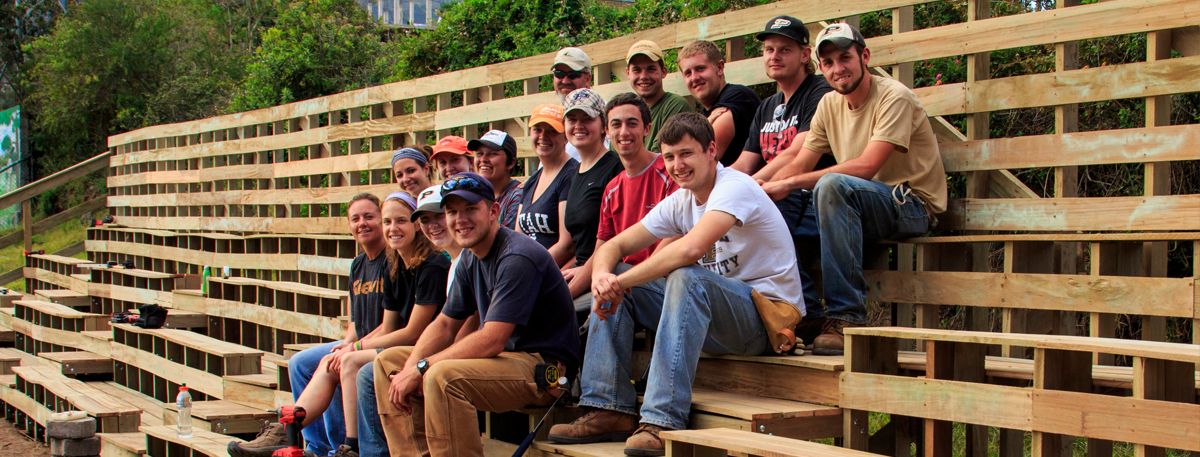CEM Students learn to adapt, collaborate to address real-world challenges
CEM Students learn to adapt, collaborate to address real-world challenges
| Magazine Section: | Engagement |
|---|---|
| Article Type: | Feature |
| Feature CSS: | background-size: 120%;
background-position: 80% 0%; |
| Page CSS: | .article #article-banner {
background-size: cover !important; background-position: 50% !important; } |
Thanks to the Global Engineering Program (GEP) and Construction Engineering Management (CEM) students at Purdue, the village of Lumbisi, Ecuador, is a safer, more accessible, and better equipped place to live.
CEM senior design students, who incorporated the Ecuador project into their Capstone coursework, labored together with Purdue Global Design Team (GDT) students in Ecuador to make the community improvements. It was a collaboration that spanned three semesters.
In December 2013, having completed supportive and investigative work ahead of time, the group of around 30 students embarked on the trip to Lumbisi. One of the first orders of business — and what would prove to be one of the major challenges of their weeklong trip —was to build a set of bleachers adjacent to the childcare center.
As a test run, students had constructed a similar segment in West Lafayette for a local baseball complex. “But that’s easy to do when you can run down the road to Menards when you need something and have easy access to a 16-foot trailer (full of supplies),” says Brandon Fulk, director of Internships for Purdue’s Division of CEM, who accompanied students to Ecuador.
The group debriefed afterward, figuring out how to make the project work in Ecuador by minimizing hardware and tools and deciding what they would carry in their jobsite bags, which could be no heavier than 49.5 pounds each.
The bleacher challenge began when the group showed up to get started on Monday morning, only to discover that there was just one-third of the lumber they needed —some of it treated, some not, Fulk says. They were told that the remaining lumber wouldn’t arrive until Thursday afternoon, leaving them only three days to complete the job.
“Our students figured it out,” says Fulk. “That’s where the Capstone kids intertwined with the design students to solve problems.”
The team simply switched gears. “We were able to adapt and do other projects while waiting on the lumber,” says Fulk. They performed maintenance on the childcare facility’s playground equipment, installed brick pavers for a platform at a greenhouse, replaced plywood on a ramp, and poured two concrete ramps. They were tireless workers.
“These students were amazing,” says Fulk. “They got up at the crack of dawn. They worked all day long and didn’t quit until midnight or one in the morning.
“Students gained personal growth and understanding of themselves,” Fulk says. “Critical thinking skills relative to planning, working with others to bridge the language gap, and utilizing alternate building materials and methods were used.”
Purdue’s work in Ecuador is not finished. Long-term plans are in the works via the EPICS program to build a spacious new community building that would add classroom space for the children. The new facility is planned to be functional sometime in 2016.

